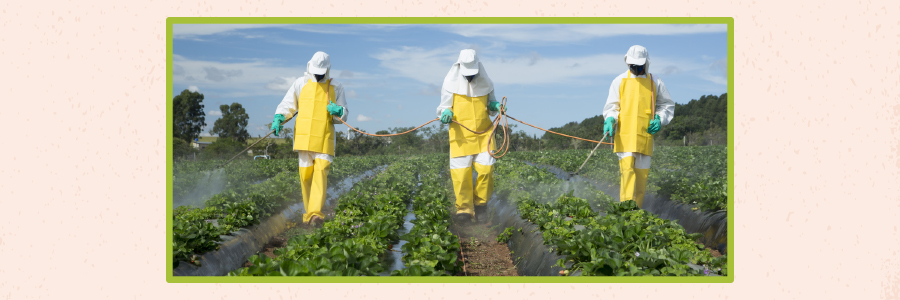


Sign-up for {N}power to get exclusive discounts, newsletters, members-only features, and more!
 Denver - Design District - Alameda and Broadway
Denver - Design District - Alameda and Broadway
368 S Broadway
Denver, CO 80209
United States
 Preferred Store:
Select a Store
Preferred Store:
Select a Store

According to consumer surveys, more than 80 percent of Americans are concerned about pesticide residue on the foods we eat;1 2 yet, how many of us contemplate the consequences for those who grow and harvest our food? According to a recently published review, globally, approximately 44 percent of farmworkers experience at least one instance of acute accidental pesticide poisoning every year, and there are around 11,000 annual deaths due to unintended pesticide poisoning. This is the first updated global estimate on this occupational hazard in more than 30 years.3

In 1990 the World Health Organization (WHO) estimated that one million people suffered accidental pesticide poisonings annually. According to this new review, which included data from more than 170 studies in 140 countries, that number has risen to an estimated 385 million.4 From 1990 to 2017, global pesticide use also increased by 80 percent overall.5
What is acute pesticide poisoning, and if it doesn’t result in extended hospitalization or fatalities, should it count? First, there isn’t a standardized definition for acute pesticide poisoning that would inform policy or treatment. The WHO defines it as any health effect or illness experienced within 48 hours of exposure to these chemicals; sometimes symptoms dissipate quickly, other times they require emergency care. However, many pesticides are associated with a range of long-term health consequences, including Parkinson’s disease, cancer, birth defects, and endocrine disruption.6 7 8 Therefore, the question remains: What are the long-term impacts for farmworkers?

The review also raises the issue of Highly Hazardous Pesticides (HHPs).iv By internationally recognized definition, these are chemicals that "appear to cause severe or irreversible harm to health or the environment under conditions of use."9 According to Pesticide Action Network (PAN), Germany, which has developed the PAN International List of HHPs, there are nearly 300 currently available. While many HHPs are banned in the United States and European Union, these places are still supplying them to the global market, particularly to low- and middle-income countries. The EPA requires registration for pesticides used here, but it has no export registration requirements. Consequently, many HHPs end up exported to countries that lack the regulations, training, and equipment necessary to "safely" handle them, putting farmworkers at further risk.10 11
Meanwhile, as reported by the Center for Biological Diversity, the EPA has recently re-approved several pesticides in the U.S. that are also on PAN’s Highly Hazardous Pesticide List. They include the following: paraquat, an herbicide with potential links to Parkinson’s; 1,3-dichloropropene, a fumigant considered a “likely” carcinogen; and methomyl, a neurotoxic insecticide threatening to more than 1,100 endangered species, including all protected salmon.12 13 14 These re-approvals, called “interim decisions,” will allow these pesticides to remain in use until 2035 if no other action is taken.15
As for the occupational hazards of pesticide exposure here at home, the review found only 1,078 reported cases of unintentional farmworker poisonings for the entirety of North America. Yet more than 70,000 cases of accidental pesticide poisonings occur in the U.S. alone every year in the general population (non-farmworkers), pointing to a potentially large gap in the data.
What can consumers do? Start by voting with your dollar. Support the kind of farming which prohibits the use of chemicals known to cause damage to human health and the environment… it’s called organic.16



Sign-up for {N}power to get exclusive discounts, newsletters, members-only features, and more!
